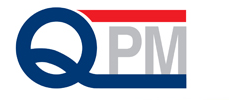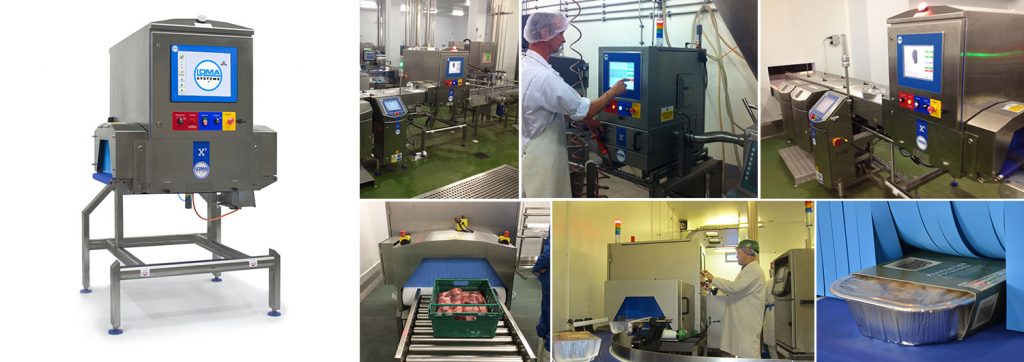Guide to X-Ray Inspection
LOMA SYSTEMS® offers this guide to X-Ray Inspection to assist food,packaging and pharmaceutical companies in understanding this remarkable technology and establishing an effective inspection program.
Why X-ray Inspection
Brand recognition and HACCP programs are becoming increasingly important in the food,packaging industries. Today, consumers and retailers alike are better informed and more focused on purchasing quality products. A contamination issue can have an impact on the brand image and the long-term success of a business.
HACCP programs can help prevent contamination, provided the proper technology and processes are in place. LOMA SYSTEMS is committed to providing the online contaminant detection systems required of many HACCP programs to protect your brand image and help your company win more business in the future.
There are three key reasons for investing in x-ray inspection:
- The business benefits from more dynamic inspection performance and greater confidence in achieving compliance
- Technical and marketing advantages are better than metal detection because x-ray systems can detect non-metallic contaminants
- Operational advantages lend maximum inspection performance at high line speeds with reliability and online simplicity
Business Case
Protecting consumers, brand image, integrity while ensuring quality and compliance represents a significant cost to your business. With LOMA® X-Ray Inspection systems, you can improve quality and reduce overall compliance costs. You also have the opportunity to increase market share and revenue.
- Ensure compliance with HACCP and retailer quality standards
- Accurately demonstrate due diligence
- Reduce recall costs
- Avoid litigation
- Increase your market share through customer confidence
- Improve customer satisfaction and retention
- Help you win new business where quality and compliance with the latest codes of practice is a key customer requirement
Technical Advantages
LOMA X-Ray Inspection systems detect metal contaminants better than metal detectors and detect non-metallic contaminants, as well as missing, underweight or broken products.
- Metal detection is not affected by foil or metallic packaging
- Excellent stainless steel detection
- Immune to environmental effects
- Detects non-metallic components such as glass, stone, calcified bone, plastics, rubber, ceramic, cement, pvc, etc.
- Identifies missing product, low fill and broken product
Operational Advantages
LOMA X-Ray Inspection systems ensure 100% confidence in compliance, without stopping the production line. The systems are simple to use and support high production line speeds.
- Production line speeds in excess of 600 packs per minute or 90m/min (300 ft/min)
- Dynamic analysis maximizes performance and virtually eliminates false rejects
- High speed computer maximizes throughput
- Simple touch screen Windows interface designed for ease of use
- Minimal training and product learn requirement
- Increased operational flexibility with minimal set-up and changeover times
- Ability to deal with product density variations and inspect randomly, produced products on a production run
X-Ray Inspection Performance (detection capability)
X-ray systems can detect the following non-exhaustive list of contaminants:
- Metal
- Non-ferrous metals in foil, including stainless steel
- Glass
- Bone (alcified)
- PVC plastic
- TFE (Teflon) plastic
- Ceramic or concrete
- Flavor/sugar clumps
- Missing product
Limitations
In most food-based products x-ray systems cannot detect the following materials:
- Low-density plastics
- Thin glass, such as fluorescent tubes
- Low-density stones
- Insects
- Wood
- Hair
- Carboard
- Paper
Applications
X-ray systems are particularly suitable for quality control in the following sectors:
- Ready Meals
- Prepared foods
- Meat
- Bakery Products
- Cereals
- Dairy foods
- Confectionery
- Vegetables
- Fruit
- Cosmetics
Global Food Inspection Capability
- LOMA SYSTEMS is a world leader in the manufacture of metal detectors, checkweighers and x-ray inspection systems
- 95% of LOMA’s x-ray inspection systems are sold to the food and packaging industries
- LOMA has more than 30 years of experience in food and packaging industry inspection
- LOMA X-Ray Inspection systems are used by 35 / 40 of the world’s largest food companies
- LOMA X-Ray Inspection systems are installed in over 100 countries around the world
Advanced Technology
- Utilize the same design concepts that make our metal detectors the choice of the world’s largest food companies
- Highly sensitive to both metallic and non-metallic contaminants
- Features advanced image processing
- Incorporates sophisticated sensor technology and detection software
Comprehensive Support
- LOMA’s international service and support network offers high-quality service and rapid response anywhere in the world
- Remote diagnostics are available via a modem connection
- Dedicated x-ray specialists provide guidance to help you meet compliance requirements
- We offer a systems integration service to help you link x-ray inspection systems, processing equipment and management information systems into a single integrated solution
- A range of flexible support packages can be tailored to your operating requirements, reducing downtime and ensuring systems operate at maximum efficiency
Principles of X-ray inspection
How X-rays Inspection Systems Work
An x-ray inspection system has three main components: a device to generate x-rays, a sensor to detect contaminants and a high-speed computer to process sensor data
Process
X-rays are generated by a special glass tube that is cooled. When high voltage is applied to that tube, electrons are generated. The electrons then strike a target which emits a stream of x-rays that are focused and reduced to a fan beam. The fan beam passes through the product before entering a sensor. The sensor then converts the x-ray signal into a form where it can be passed to a computer for processing and detection.
Detection
- X-ray systems detect contaminants by density difference
- As an x-ray penetrates a product, it loses some of its energy
- A dense area such as a contaminant will reduce the energy even further
- As the x-ray exits the product, it reaches the sensor – an array of photo-diodes that precisely measure the x-ray energy that reaches them
- The sensor converts the energy signal into a grey-scale image
- A high-speed computer scans the sensor at thousands of times per second and stores the individual signals
- It compares them to a dynamic value that delivers the maximum level of sensitivity and minimum level of false readings
- A contaminant is highlighted as a darker shade of grey than the product
- Effective x-ray inspection depends on the sophistication of data analysis

